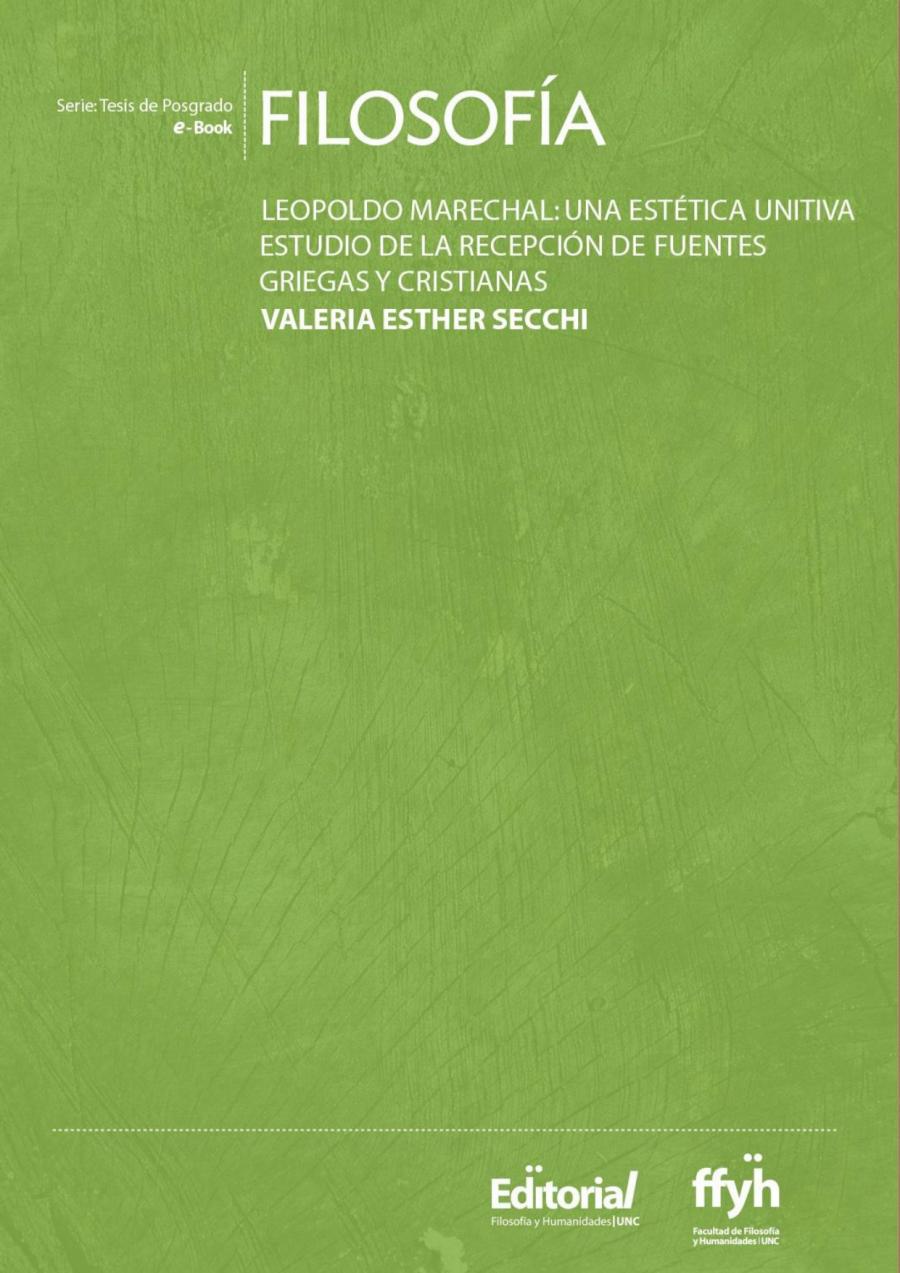Leopoldo Marechal: una estética unitiva estudio de la recepción de fuentes griegas y cristiana
Palabras clave:
Marechal Leopoldo 1900-1970, estética, fuentes griegas, fuentes cristianas, filosofía, LiteraturaSinopsis
La estética de Leopoldo Marechal es una estética unitiva, en la cual convergen la belleza ontológica, la producción artística, la erótica, la epistemología y la mística. La estética es el punto de partida y el hilo de oro, a partir del cual puede leerse toda la
producción marechaliana.
La intención del presente estudio es propiciar la comunicación entre el poeta argentino y una selección de fuentes griegas y cristianas. Entre las cuales se establecen tres niveles de preferencia. Primer nivel, la recepción de Platón y Dante, quienes constituyen las fuentes fundamentales del autor. Segundo nivel, la recepción de Homero y Aristóteles, en orden a la construcción de la poética marechaliana. Tercer nivel, Plotino e Isidoro de Sevilla, para el tratamiento de algunas cuestiones puntuales.
Se parte del supuesto de que la escritura marechaliana constituye una “poética filosófica”, es decir, un “pensar por imágenes” que se sostiene en una dimensión ontológica, la cual sirve de andamiaje o de soporte de la forma poética. La forma
externa es una excusa, un anzuelo, que atrae desde fuera hacia un centro de sentido.
Este centro propone una experiencia que supera el horizonte de lo literario. Se trata de una filosofía que busca romper el límite de lo racional para escalar a la experiencia mística.

Descargas
Publicado
Categorías
Licencia

Esta obra está bajo una licencia internacional Creative Commons Atribución-NoComercial-CompartirIgual 4.0.



























